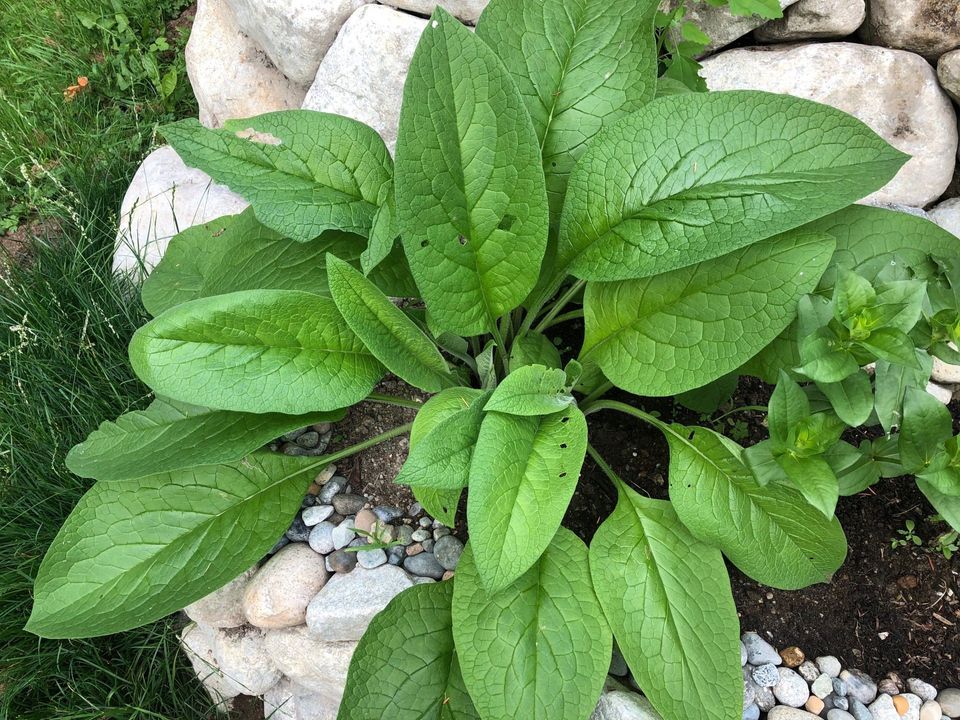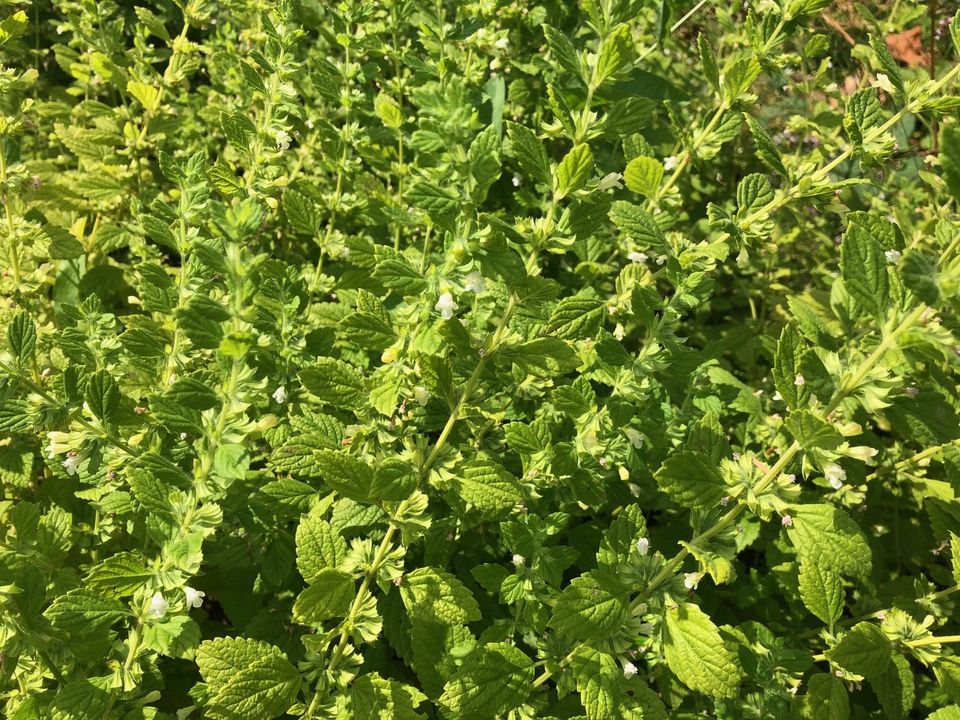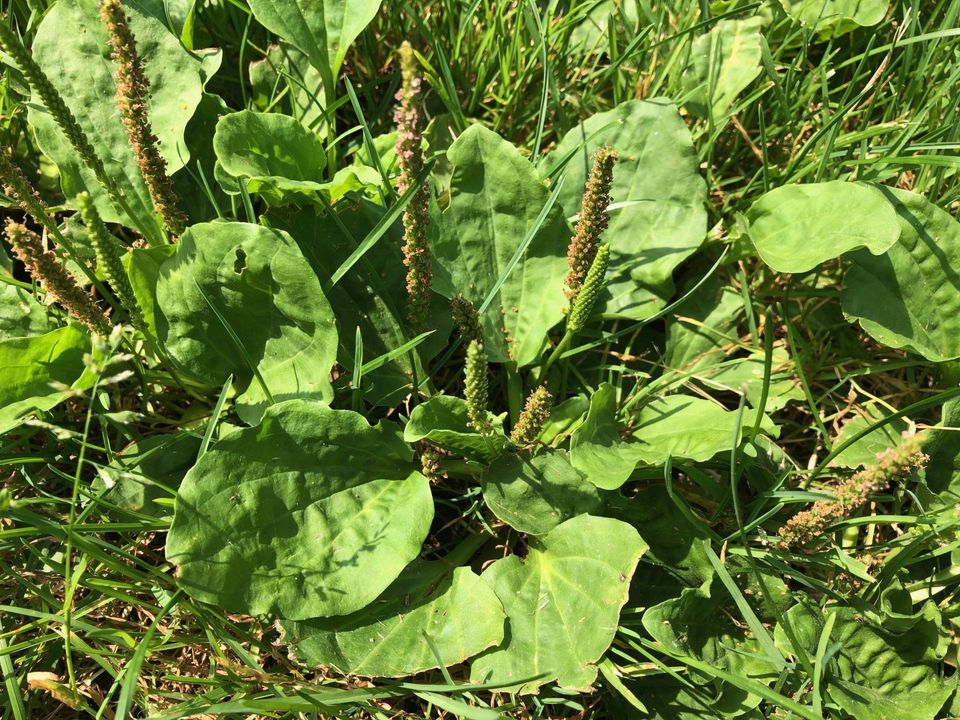Bee Sting Poultice
Kari Ragan • July 31, 2020
A simple recipe for making your own poultice using backyard herbs and wild edibles.
While working to clean up an overgrown backyard for a landscaping client, my husband Adam had a run-in with some angry bees. That evening he came home with about half a dozen stings, several of which were quite painful. I looked online for some home remedies and was excited to find several sites suggesting a poultice made from some backyard plants.
Poul·tice (pōl′tĭs) n.
"A soft moist mass of bread, meal, clay, or other adhesive substance, usually heated, spread on cloth, and applied to warm, moisten, or stimulate an aching or inflamed part of the body. Also called cataplasm."
From the Middle English, "pultes," and from the Medieval Latin, "pultēs," meaning thick paste. thefreedictionary.com
We gathered the following ingredients and made our own poultice using the various herbs suggested along with some pantry ingredients that are also known for their healing properties.
Ingredients:
- Lemon Balm
- Comfrey
- Plantain
- Honey
- Baking Soda
- Apple Cider Vinegar
Additionally, aloe vera gel and lavender essential oil are great to use too as stand alone treatment, or in conjunction with any of the afore mentioned ingredients.
Supplies:
- Mortar and Pestle
- Gauze
- Elastic Bandage with Clips
- Ice Cube Tray (if you would like to make a larger batch and save some for future use)
Preparation:
- Gather a handful of each of the herbs/wild edibles from your garden and crush them together using your mortar and pestle. Mix in some honey, baking soda, and apple cider vinegar (approximately 1 tablespoon of each).
- Place a teaspoon of the mixture onto a piece of gauze and put it on the affected area of skin, securing it with an elastic bandage.
- Change poultice every half an hour until the swelling, redness and pain have subsided.
- To store for future use, put the mixture into ice cube trays to freeze for later. Once frozen, you can transfer the ice cubes to a ziplock bag. While herbs are best used fresh, in a pinch it’s great to have something on hand until you can make up another batch.
Did it work?
As with any natural remedy, the effects aren't immediate. But they don’t come with any negative side effects. After leaving the poultice on for half an hour, the sharp pain had subsided. The affected area which had been an enflamed red with swelling, hot to the touch, had changed back to a normal skin tone with much of the heat gone.
Why these ingredients?
Lemon Balm - "The genus name of lemon balm is Melissa officinalis. “Melissa” originates from Greek and means “honey bee.” Lemon balm is a favorite plant of bees as it produces fragrant nectar, and it just so happens that bee keepers also use this plant, not only to provide nectar for their bees, but to calm and relax them in order to keep them from swarming and stinging… When using lemon balm on stings, the actions of the herb are mainly astringent. This helps to decrease the swelling of the sting site which in turn, decreases pain." theherbalacademy.com
Comfrey - "Comfrey is also an excellent herb for reducing pain. It’s anti-inflammatory, demulcent, and astringent attributes combine to reduce swelling, soothe, protect, and tone inured, angry tissues. Use it for musculoskeletal pain, nerve pain, bites, stings, burns, sprains, strains, and just about any other pain. It’s astringency also helps to stop bleeding." thegrownetwork.com
Plantain - "Plantain has been used as a panacea in some Native American cultures and with some very good reasons. Many of its active constituents show antibacterial and antimicrobial properties, as well as being anti-inflammatory and antitoxic. The leaves, shredded or chewed, are a traditional treatment for insect and animal bites and the antibacterial action helps prevent infection and the anti-inflammatory helps to relieve pain, burning, and itching." wellnessmama.com
Honey - "Honey has antibacterial properties and a unique pH balance that promotes oxygen and healing compounds to a wound." healthline.com
Baking Soda - "Bee venom has formic acid which is also known as methanoic acid. As the bee venom is acidic in nature and the bicarbonate of soda which is an alkali can neutralize its effect reducing the pain too." rapidhomeremedies.com
Apple Cider Vinegar - "Apple cider vinegar works in much the same way as baking soda. Applied topically, it helps neutralize the acid in the sting. ACV also relieves inflammation and reduces itching." earthclinic.com






